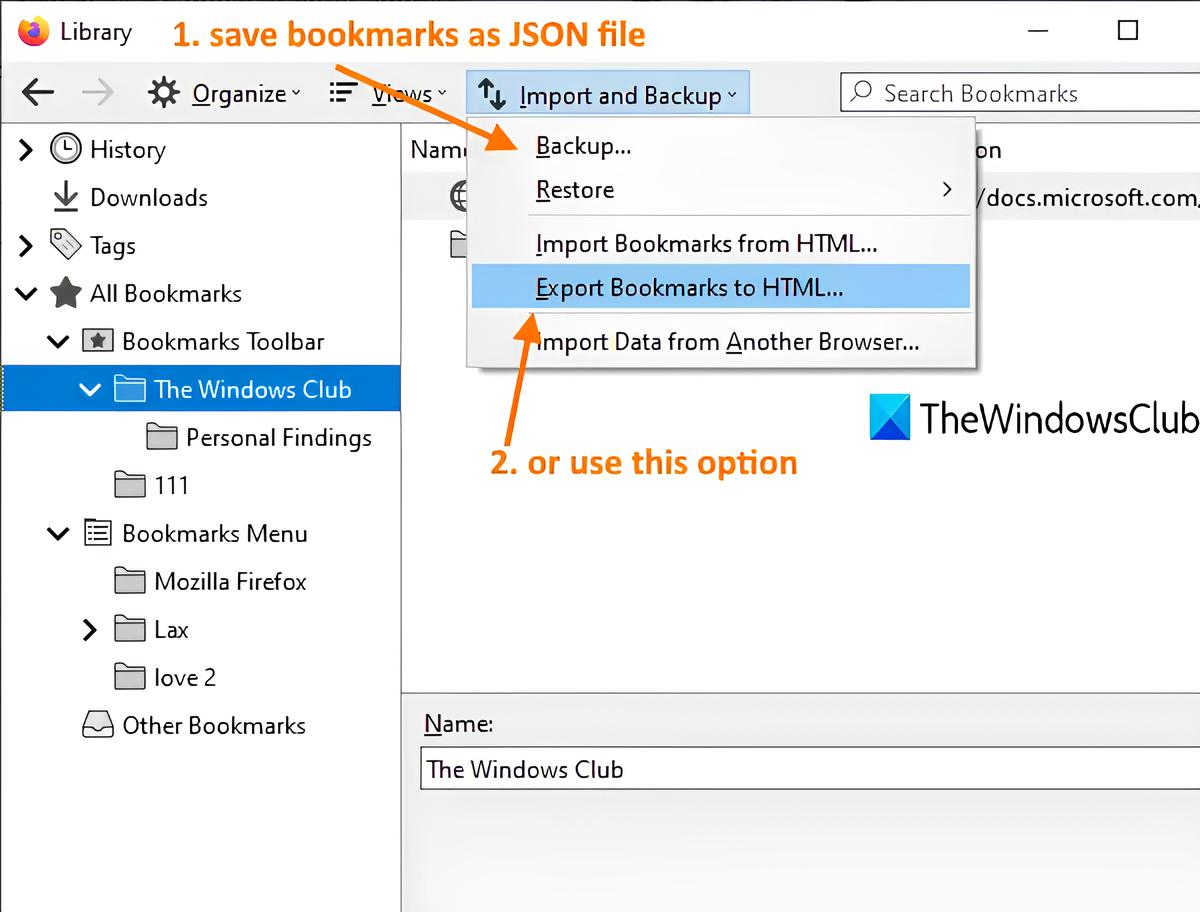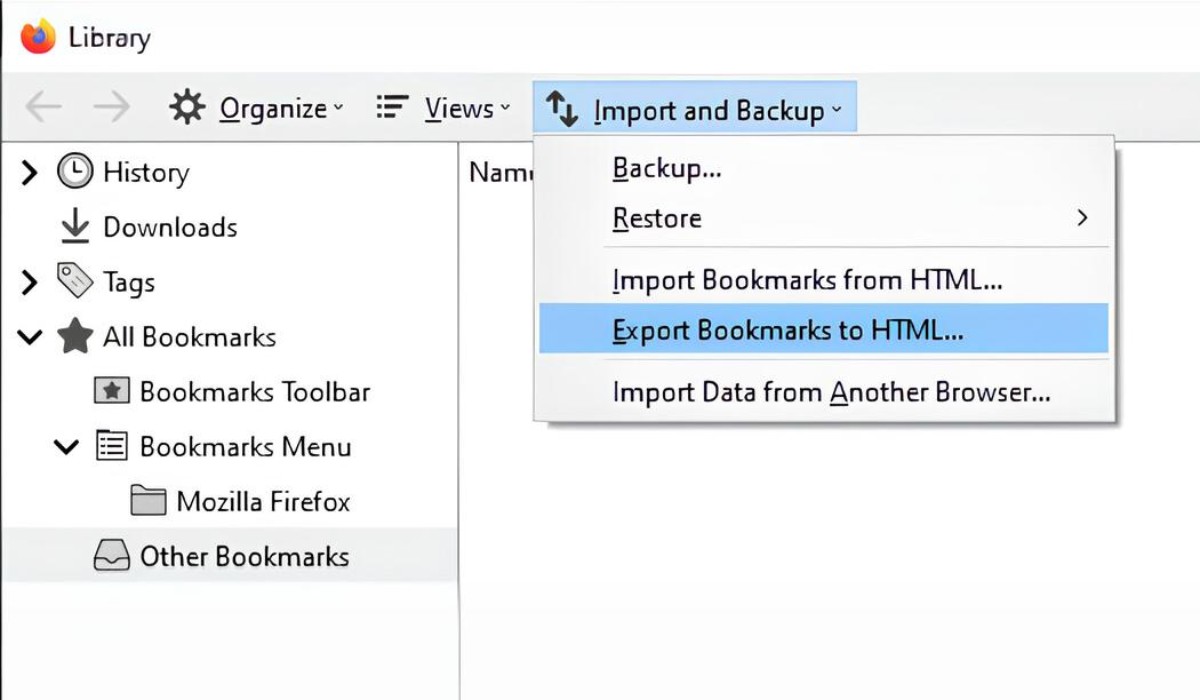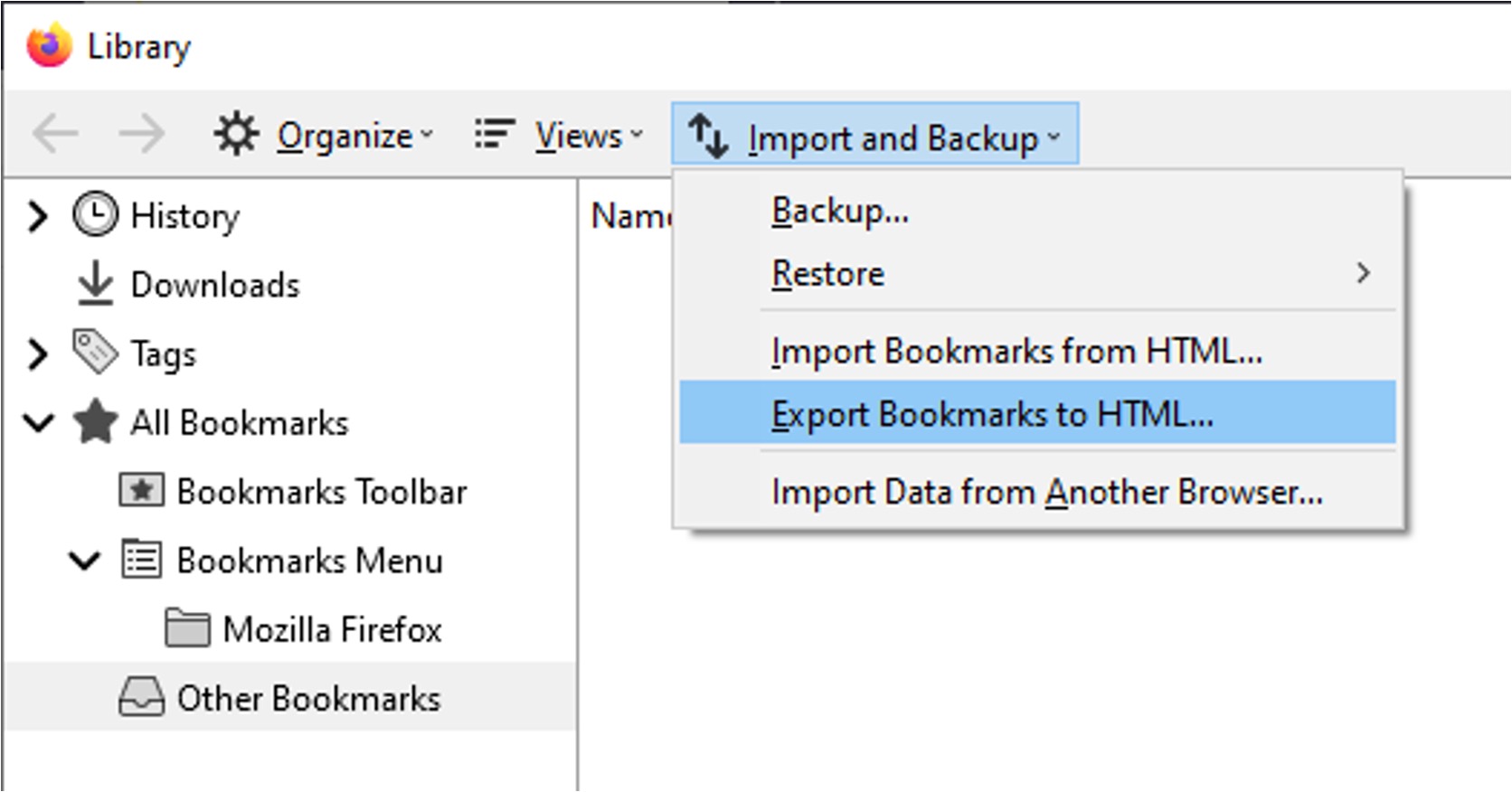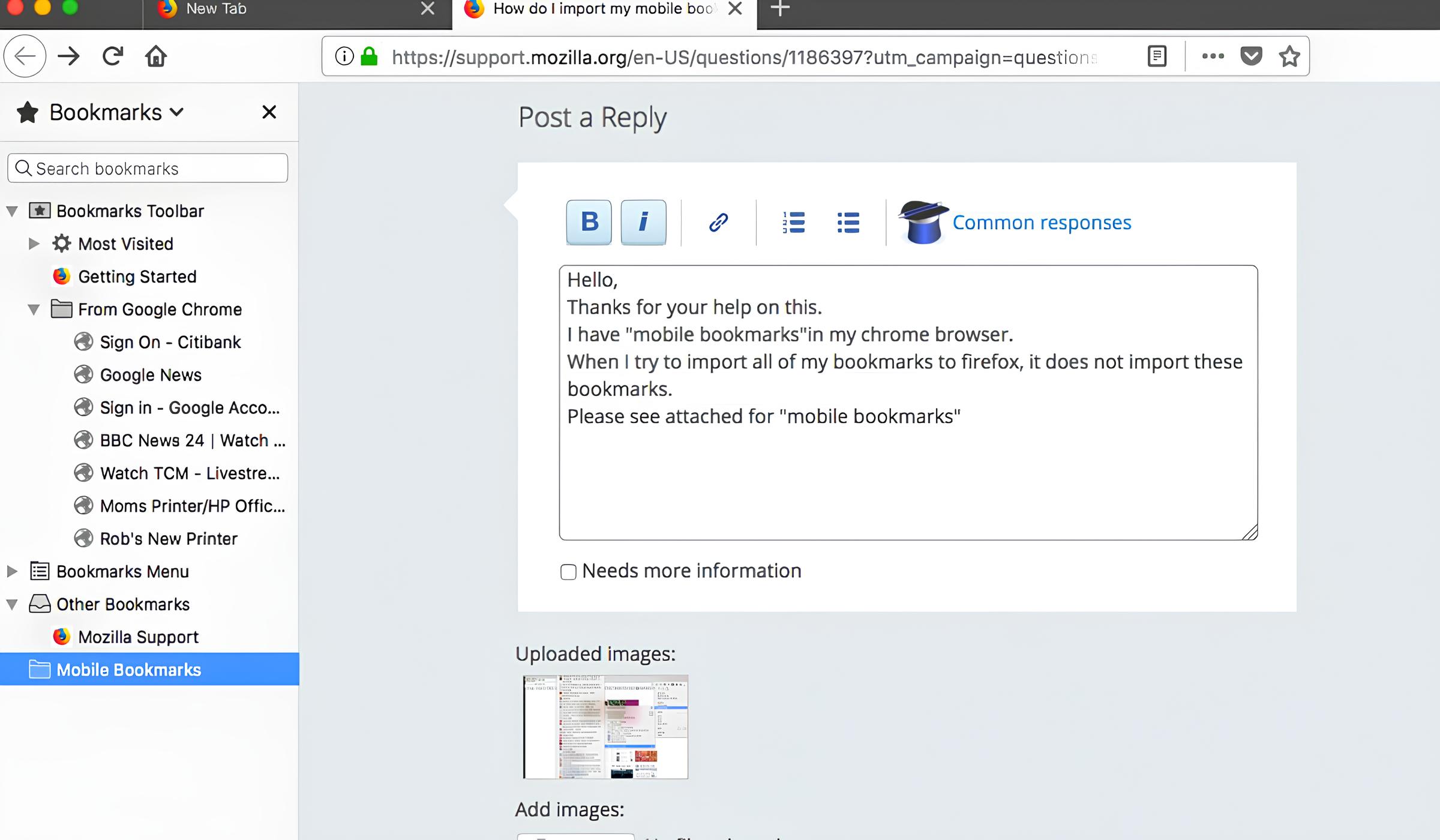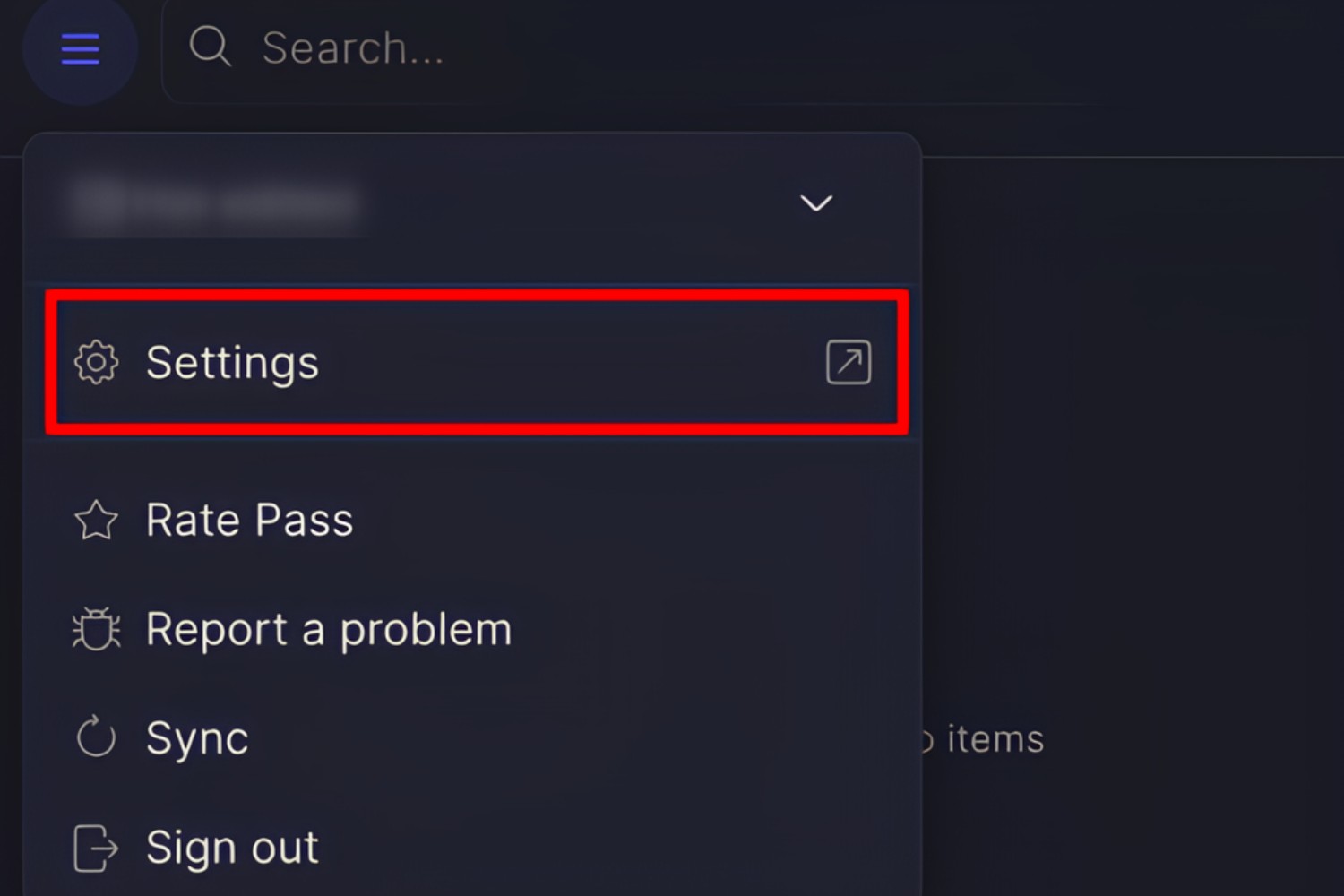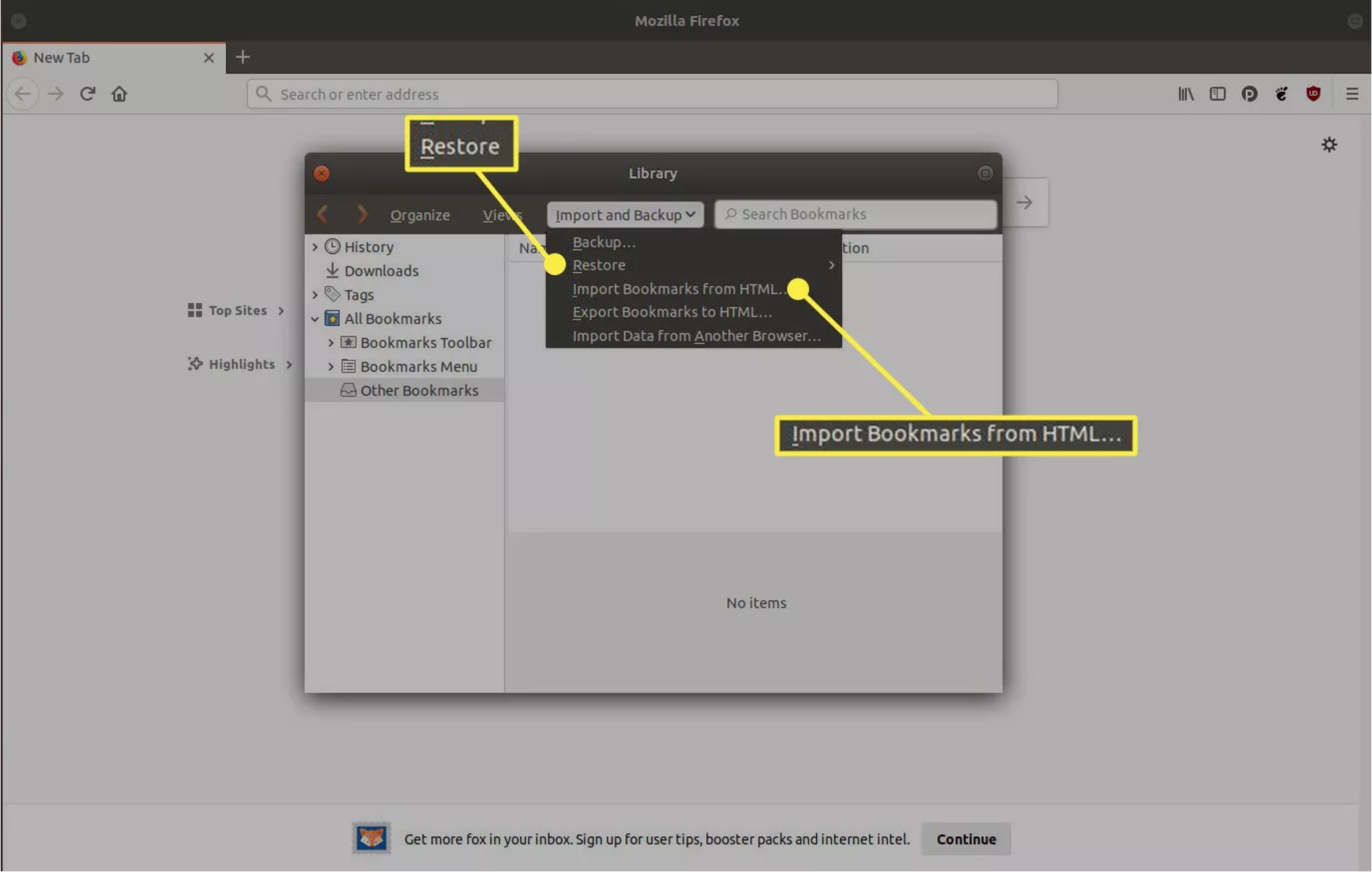Introduction
Firefox is a popular web browser known for its user-friendly interface and customizable features. One of the essential functionalities that users often need is the ability to export bookmarks. Whether you want to create a backup of your bookmarks, transfer them to another browser, or simply organize them in a different way, knowing how to export bookmarks in Firefox can be incredibly useful.
In this article, we will guide you through the step-by-step process of exporting bookmarks in Firefox. By following these instructions, you will be able to save your bookmarks to an HTML file, which can then be imported into another browser or used as a backup for safekeeping.
Exporting bookmarks from Firefox is a straightforward process that can be completed in just a few simple steps. Whether you are a seasoned Firefox user or a newcomer to the browser, this guide will equip you with the knowledge and skills to efficiently export your bookmarks and ensure that your valuable collection of saved websites is always accessible and secure.
Now, let's dive into the step-by-step instructions for exporting bookmarks in Firefox, so you can take full control of your bookmark collection and seamlessly manage it according to your preferences.
Step 1: Open Firefox and access the bookmarks
To begin the process of exporting bookmarks in Firefox, the first step is to open the Firefox web browser on your computer. Once Firefox is launched, you can proceed to access your bookmarks by following these simple steps.
Accessing Bookmarks via the Toolbar
At the top of the Firefox window, you will find the toolbar, which contains various icons and options for navigating the browser. Look for the bookmarks icon, which typically resembles an open book. Clicking on this icon will open a drop-down menu that provides quick access to your bookmarked websites.
Using the Bookmarks Menu
Alternatively, you can access your bookmarks by clicking on the "Bookmarks" option in the Firefox menu located at the top-left corner of the browser window. When you hover over the "Bookmarks" menu, a list of options will appear, including "Show All Bookmarks." Selecting this option will open the Library window, where you can manage and organize your bookmarks.
Keyboard Shortcut
For users who prefer keyboard shortcuts, you can quickly access your bookmarks by pressing "Ctrl + Shift + B" on Windows or "Command + Shift + B" on macOS. This shortcut will open the Library window, allowing you to view and manage your bookmarks efficiently.
By following these methods, you can easily open Firefox and access your bookmarks, setting the stage for the subsequent steps in the process of exporting your bookmarks to an HTML file. With your bookmarks readily accessible, you are now prepared to proceed to the next step and continue the process of exporting bookmarks in Firefox.
Step 2: Click on the Library button
In Firefox, the Library button serves as a gateway to a wealth of management options, including the ability to organize bookmarks, view browsing history, and access downloads. Clicking on the Library button opens the Library window, providing users with a centralized hub for managing their browsing data and saved content.
To locate the Library button, look for an icon that resembles a set of books or a bookshelf. This icon is typically positioned toward the right side of the Firefox toolbar, alongside other essential buttons such as those for navigating back and forward, refreshing the page, and accessing the home page.
Upon clicking the Library button, a drop-down menu will appear, presenting a range of options for organizing and managing your browsing data. One of the key features accessible through the Library button is the ability to manage bookmarks, making it an essential tool for users who wish to export their bookmarks to an HTML file.
By clicking on the Library button and accessing the Library window, users gain access to a comprehensive set of bookmark management tools. From this centralized interface, you can organize your bookmarks into folders, edit bookmark properties, and perform various other actions to streamline and optimize your bookmark collection.
In addition to managing bookmarks, the Library window also provides access to browsing history, allowing users to review and revisit previously visited websites. This feature can be particularly useful for users who wish to retrace their online activities or quickly revisit a website they recently accessed.
Overall, clicking on the Library button in Firefox opens the door to a range of powerful management tools, empowering users to take full control of their browsing data and saved content. By leveraging the functionality offered through the Library window, users can efficiently organize their bookmarks and prepare to export them to an HTML file, as part of the broader process of managing and safeguarding their valuable collection of saved websites.
With the Library window now accessible, users can proceed to the next steps in the process of exporting bookmarks in Firefox, leveraging the tools and options available within the Library interface to facilitate a seamless and efficient export process.
Step 3: Select "Bookmarks" and then "Show All Bookmarks"
After clicking on the Library button and accessing the Library window in Firefox, the next crucial step in the process of exporting bookmarks involves selecting the "Bookmarks" option and then choosing "Show All Bookmarks." This sequence of actions opens the Bookmarks Library, providing users with a comprehensive view of their bookmark collection and the necessary tools to proceed with exporting bookmarks to an HTML file.
Upon clicking on the Library button, a drop-down menu appears, presenting a range of options for managing browsing data. Among these options, "Bookmarks" stands out as a pivotal entry point for users seeking to organize, edit, and export their bookmarked websites. By selecting "Bookmarks" from the drop-down menu, users initiate the process of accessing their bookmark collection within the Library window.
Once inside the Bookmarks Library, users are presented with a user-friendly interface that allows for seamless navigation and organization of bookmarks. At this stage, the option to "Show All Bookmarks" becomes available, enabling users to view their entire bookmark collection in a single consolidated view. This feature is particularly valuable for users with extensive bookmark collections, as it provides a convenient way to review and manage bookmarks before proceeding with the export process.
The "Show All Bookmarks" feature offers users a comprehensive overview of their bookmarked websites, displaying them in a structured and easily navigable format. Within the Bookmarks Library, users can explore various categories, including bookmarks organized by folders, tags, and the option to view all bookmarks in a unified listing. This level of flexibility and organization empowers users to locate specific bookmarks, review their saved websites, and prepare for the subsequent steps in the export process.
Furthermore, the Bookmarks Library offers additional functionalities, such as the ability to create new folders, organize bookmarks into existing folders, and edit bookmark properties. These features provide users with the tools to customize and refine their bookmark collection before exporting it to an HTML file, ensuring that the exported bookmarks align with their preferences and organizational structure.
By selecting "Bookmarks" and then choosing "Show All Bookmarks," users gain access to a wealth of bookmark management capabilities within the Bookmarks Library. This pivotal step sets the stage for the subsequent actions required to export bookmarks in Firefox, empowering users to efficiently organize and prepare their bookmark collection for exportation while leveraging the intuitive features available within the Bookmarks Library interface.
Step 4: Click on "Import and Backup" and select "Export Bookmarks to HTML"
Once you have accessed the Bookmarks Library and reviewed your bookmark collection, the next pivotal step in the process of exporting bookmarks in Firefox involves clicking on the "Import and Backup" option and selecting "Export Bookmarks to HTML." This step serves as the gateway to initiating the export process, allowing users to save their bookmarks to an HTML file for backup, transfer, or organizational purposes.
To access the "Import and Backup" menu, navigate to the top of the Bookmarks Library window. Here, you will find a menu labeled "Import and Backup," which houses a range of options for managing your bookmarks. Clicking on this menu reveals a set of actions, including the ability to import bookmarks from an HTML file, backup bookmarks, and export bookmarks to an HTML file.
Upon selecting "Export Bookmarks to HTML" from the "Import and Backup" menu, a dialog box will appear, prompting you to choose the location where you want to save the exported bookmarks. This dialog box provides users with the flexibility to designate a specific folder or directory on their computer where the HTML file containing the exported bookmarks will be stored.
By offering users the ability to specify the location for saving the exported bookmarks, Firefox empowers individuals to maintain control over their bookmark data and seamlessly integrate the exported file into their preferred storage or transfer destination. Whether you intend to create a backup of your bookmarks, transfer them to another browser, or store them in a designated folder for organizational purposes, this step ensures that the exported bookmarks are readily accessible and aligned with your specific preferences.
The "Export Bookmarks to HTML" feature in Firefox streamlines the process of safeguarding and managing your bookmark collection, providing a convenient and efficient method for exporting bookmarks to a universally compatible HTML file. By clicking on "Import and Backup" and selecting "Export Bookmarks to HTML," users can leverage the browser's built-in functionality to preserve their valuable collection of saved websites and seamlessly integrate them into their browsing ecosystem.
With the exported bookmarks securely saved to an HTML file, users gain the flexibility to import them into another browser, share them with others, or maintain a reliable backup for future use. This step marks a pivotal stage in the process of exporting bookmarks in Firefox, offering users a seamless and intuitive method for preserving and managing their bookmark collection with ease and precision.
Step 5: Choose the location to save the exported bookmarks
After initiating the process of exporting bookmarks to an HTML file in Firefox, the final step involves choosing the location where the exported bookmarks will be saved. This critical stage empowers users to designate a specific folder or directory on their computer, providing a tailored storage destination for the HTML file containing the exported bookmarks.
Upon selecting "Export Bookmarks to HTML" from the "Import and Backup" menu, a dialog box will appear, prompting users to specify the location where they want to save the exported bookmarks. This dialog box serves as a pivotal interface for users to define the storage destination according to their preferences and organizational needs.
By offering the flexibility to choose the location for saving the exported bookmarks, Firefox ensures that users can seamlessly integrate the HTML file into their preferred storage environment. Whether users intend to create a dedicated folder for bookmark backups, transfer the exported file to a specific directory, or store it in a location that aligns with their organizational structure, this step empowers individuals to maintain full control over their bookmark data.
Users can leverage this opportunity to select a storage location that facilitates easy access and retrieval of the exported bookmarks. Whether it's a designated folder for browser data, a cloud storage service, or a specific directory on their computer, the ability to choose the location for saving the exported bookmarks ensures that the bookmark collection remains readily accessible and seamlessly integrated into the user's digital ecosystem.
Furthermore, the option to choose the location for saving the exported bookmarks aligns with best practices for data management and organization. By allowing users to define the storage destination, Firefox empowers individuals to maintain a structured and efficient approach to managing their bookmark collection, ensuring that the exported bookmarks are stored in a location that complements their browsing habits and workflow.
In essence, the ability to choose the location for saving the exported bookmarks represents the final step in the process of exporting bookmarks in Firefox. By providing users with the flexibility to designate a storage destination, Firefox ensures that the exported bookmarks are seamlessly integrated into the user's digital environment, ready to be accessed, imported, or utilized according to their specific needs and preferences.
Conclusion
In conclusion, the process of exporting bookmarks in Firefox offers users a seamless and intuitive method for safeguarding and managing their valuable collection of saved websites. By following the step-by-step instructions outlined in this guide, users can efficiently export their bookmarks to an HTML file, providing a versatile and universally compatible format for backup, transfer, and organizational purposes.
The journey begins with opening Firefox and accessing the bookmarks, setting the stage for the subsequent steps. Clicking on the Library button grants users access to a wealth of management options, including the ability to organize bookmarks, view browsing history, and access downloads. From there, selecting "Bookmarks" and then "Show All Bookmarks" opens the Bookmarks Library, providing users with a comprehensive view of their bookmark collection and the necessary tools to proceed with exporting bookmarks to an HTML file.
The pivotal moment arrives when users click on "Import and Backup" and select "Export Bookmarks to HTML," initiating the export process and prompting users to choose the location where the exported bookmarks will be saved. This critical stage empowers users to designate a specific folder or directory on their computer, providing a tailored storage destination for the HTML file containing the exported bookmarks.
By offering the flexibility to choose the location for saving the exported bookmarks, Firefox ensures that users can seamlessly integrate the HTML file into their preferred storage environment. Whether users intend to create a dedicated folder for bookmark backups, transfer the exported file to a specific directory, or store it in a location that aligns with their organizational structure, this step empowers individuals to maintain full control over their bookmark data.
In essence, the process of exporting bookmarks in Firefox equips users with the knowledge and tools to efficiently manage and safeguard their bookmark collection. By leveraging the browser's built-in functionality, users can preserve their valuable collection of saved websites and seamlessly integrate them into their browsing ecosystem. With the exported bookmarks securely saved to an HTML file, users gain the flexibility to import them into another browser, share them with others, or maintain a reliable backup for future use.
Overall, the ability to export bookmarks in Firefox represents a valuable feature that enhances the browsing experience and empowers users to maintain control over their bookmark collection. By following the outlined steps, users can navigate the export process with confidence, ensuring that their bookmark data remains accessible, secure, and seamlessly integrated into their digital environment.







